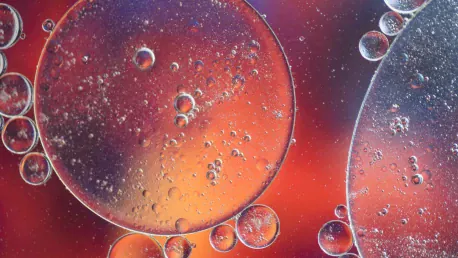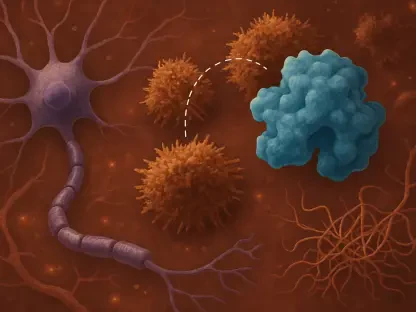The field of regenerative medicine has seen remarkable advancements over the past few decades, with stem cell therapies emerging as a promising frontier. These therapies hold the potential to revolutionize the treatment of a wide array of diseases and conditions by harnessing the body’s own repair mechanisms. This article delves into the current state of stem cell research, the progress made, and the future prospects of these groundbreaking therapies.
The Evolution of Stem Cell Research
Early Enthusiasm and Breakthroughs
Stem cell research began with great enthusiasm, driven by the potential to regenerate damaged tissues and organs. The discovery of pluripotent stem cells, which can differentiate into any cell type, marked a significant milestone. This breakthrough earned a Nobel Prize and set the stage for further advancements in the field. Researchers were excited by the prospects of using these versatile cells to repair or replace damaged organs with patient-specific cells, reducing the risk of immune rejection and improving patient outcomes.
However, early experiments also faced significant challenges. Ethical concerns arose with the use of embryonic stem cells, prompting the scientific community to explore alternative sources. One of the most groundbreaking discoveries in this context was the development of induced pluripotent stem cells (iPSCs) by reprogramming adult cells to achieve a pluripotent state. This innovation ushered in a new era in regenerative medicine by averting ethical controversies while retaining the versatility of embryonic stem cells. Since then, stem cell research has increasingly focused on translating these lab-based discoveries into practical treatments for a diverse array of conditions.
Mesenchymal Stem Cells and Cardiac Repair
Dr. Joshua Hare’s pioneering work with mesenchymal stem cells (MSCs) aimed to repair heart tissue damaged by heart attacks. This approach caught the medical community’s attention due to the high prevalence of cardiovascular diseases and the limited effectiveness of existing treatments. While initial hopes hinged on MSCs transforming into cardiac muscle cells, subsequent studies revealed that MSCs primarily exert their therapeutic effects through paracrine signaling—they secrete various factors that reduce inflammation, prevent cell death, and promote healing.
In clinical trials, MSCs have shown promise in reducing the extent of damage and scarring in heart tissue, leading to improved heart function and patient mobility. This was an unexpected but critical finding, highlighting the need for continued research to fully understand the mechanisms by which MSCs confer their benefits. Dr. Hare’s studies demonstrated that even if MSCs do not turn into new heart cells, their ability to modulate the local environment and stimulate repair processes can significantly impact recovery and overall health in patients who have suffered cardiac events. This shift in understanding has paved the way for a more comprehensive exploration of MSCs’ potential in treating other serious conditions.
Clinical Trials and Experimental Therapies
Targeting Chronic and Degenerative Conditions
The Interdisciplinary Stem Cell Institute (ISCI) at the University of Miami Miller School of Medicine is at the forefront of clinical trials using stem cells to treat various conditions. These trials include therapies for diabetes, stroke, Alzheimer’s disease, and cardiac disorders. The goal is to harness the regenerative potential of stem cells to combat these chronic and degenerative diseases. By utilizing both MSCs and iPSCs, researchers can address multiple facets of these complex conditions—regrowing damaged tissues, modulating immune responses, and rejuvenating cellular functions.
For instance, in diabetes, stem cell therapies are being explored to replace or repair insulin-producing beta cells in the pancreas, potentially offering a curative approach rather than merely managing symptoms. In neurodegenerative diseases like Alzheimer’s, stem cells might help regenerate lost neural connections or deliver therapeutic agents directly to the brain to slow disease progression. Similarly, stroke patients could benefit from stem cells’ ability to promote brain repair and recovery, potentially improving long-term outcomes and quality of life. Each of these trials represents a multi-faceted attack on diseases that have long been considered incurable or manageable only through lifelong treatment.
Induced Pluripotent Stem Cells and Cardiac Stem Cells
Research at ISCI also extends to induced pluripotent stem cells (iPSCs) and cardiac stem cells. These cells are being investigated for their potential to treat retinal disorders and congenital heart defects in infants. The versatility of iPSCs, which can be reprogrammed from adult cells, offers a promising avenue for developing personalized therapies. By generating patient-specific iPSCs, scientists can create genetically identical cells that minimize immune rejection and precisely target genetic defects.
For retinal disorders, iPSCs can potentially be used to generate retinal pigment epithelial cells that are implanted into the eye, offering hope for patients with conditions like macular degeneration. In the case of congenital heart defects, iPSCs and cardiac stem cells can potentially generate new heart tissues to repair defects and improve cardiac function in infants, who currently have limited treatment options. These applications underscore the significant advances and potential of iPSCs in addressing a multitude of health issues precisely and effectively.
In-House Manufacturing and Translational Experience
Clinical Research Cell Manufacturing Program
A critical component of ISCI’s capabilities is its Clinical Research Cell Manufacturing Program (GMP lab), directed by Aisha Khan. This facility produces stem cells and biologic products, supports clinical and preclinical studies, and helps navigate regulatory requirements. The in-house GMP lab empowers ISCI to initiate and manage its clinical trials independently. By producing their stem cells on-site, ISCI can ensure the highest quality and purity, adhering to stringent regulatory standards that are crucial for the success of clinical interventions.
The lab operates under Good Manufacturing Practice (GMP) guidelines, which are essential for producing clinical-grade products. These guidelines ensure that all aspects of the manufacturing process—from cell collection and processing to storage—adhere to rigorous standards designed to guarantee safety and efficacy. This capability not only accelerates the timeline for bringing new therapies to trial but also reduces dependency on external suppliers and collaborators, streamlining the path from research to patient treatment.
Ensuring Compliance and Quality
The GMP lab ensures that all stem cell products meet stringent regulatory standards, which is crucial for the success of clinical trials. By maintaining high-quality production and compliance, ISCI can focus on advancing its research and bringing innovative therapies to patients. Rigorous testing protocols are in place for each batch of cells produced, including tests for sterility, viability, and functionality. This comprehensive quality control framework mitigates risks associated with clinical applications and enhances the credibility and reliability of research findings.
Furthermore, the GMP lab supports various preclinical studies by providing researchers with high-quality stem cells and biologic products needed to explore new therapeutic avenues. This capability is vital for translating laboratory discoveries into real-world applications, facilitating faster and more effective transitions from experimental phases to clinical implementation. By ensuring that all processes align with regulatory requirements, the GMP lab helps secure necessary approvals and paves the way for the broader adoption of stem cell therapies.
Collaborative Efforts and Interdisciplinary Approach
Ophthalmology and Plasma-Derived Therapies
Collaboration is a cornerstone of ISCI’s research approach. In ophthalmology, Dr. Alfonso Sabater is developing a plasma-derived therapy for severe dry eye disease. The GMP lab supports this project by providing product testing and ensuring regulatory compliance, highlighting the interdisciplinary nature of ISCI’s work. This collaborative environment fosters the exchange of ideas and resources, allowing researchers to tackle complex medical issues from multiple angles and develop comprehensive treatment strategies.
Plasma-derived therapies involve using components of the patient’s own blood plasma to stimulate healing and reduce inflammation. In the case of dry eye disease, this approach can potentially enhance the natural repair mechanisms of ocular tissues, providing relief and improving eye health. By integrating the expertise of ophthalmologists, biologists, and regulatory specialists, ISCI aims to translate innovative ideas into effective treatments that can significantly improve patients’ quality of life.
Exosomes and Bronchopulmonary Dysplasia
Dr. Karen Young’s team is exploring the use of exosomes, small signal-carrying vesicles released by cells, as a potential therapy for bronchopulmonary dysplasia (BPD) in preterm infants. This chronic lung disease significantly impacts long-term health, and exosome therapy could improve survival rates and outcomes for affected infants. Exosomes offer a novel approach by delivering therapeutic agents directly to target cells, enhancing cellular communication and promoting regenerative processes.
The research into exosomes signifies a broader trend in regenerative medicine, where the focus is shifting towards harnessing the body’s signaling pathways for therapeutic purposes. Exosomes can modulate immune responses, reduce inflammation, and promote tissue repair, making them valuable tools in treating conditions with complex pathologies like BPD. Dr. Young’s research exemplifies how cutting-edge science can impact pediatric care, offering hope for vulnerable populations facing severe health challenges from an early age.
The Promise of Organoids
Growing Organoids from iPSCs
Researchers at ISCI are using iPSCs to grow organoids—tiny, three-dimensional structures that resemble organs. These organoids enable the study of diseases in a controlled environment and hold the potential to develop new treatments by replacing damaged tissue. This innovative approach allows scientists to recreate the microarchitecture and functionality of human organs in vitro, providing unique insights into disease mechanisms and therapeutic responses.
Organoids can be generated to model various organs, including the brain, heart, liver, and intestines. These structures are invaluable for studying complex interactions within tissues, testing the effects of new drugs, and exploring genetic conditions in a highly controlled setting. The ability to closely mimic human organ systems accelerates research and offers promising pathways for developing personalized medicine approaches, where treatments are tailored to the individual’s specific genetic and physiological characteristics.
Applications in Heart and Brain Repair
Organoids could play a crucial role in restoring heart or brain function after a stroke. By mimicking the structure and function of real organs, organoids offer a unique platform for testing therapies and understanding disease mechanisms, paving the way for innovative treatments. For example, heart organoids can be used to study cardiac diseases and test potential therapies in an environment that closely replicates the human heart’s physiological conditions.
Similarly, brain organoids provide a valuable model for researching neurodegenerative diseases, brain injuries, and developmental disorders. Researchers can investigate how different treatments affect brain cell function and connectivity, leading to more effective strategies for repairing brain damage and improving cognitive outcomes. The potential to generate patient-specific organoids means that treatments can be customized to address the unique aspects of each patient’s condition, maximizing therapeutic efficacy and minimizing adverse effects.
The Future of Stem Cell Therapies
Holistic Health Improvement
The overarching trend in stem cell research is shifting from treating individual disease defects to improving overall health through regenerative medicine. Stem cell-based therapies are seen as a versatile approach to restore and promote health and function, offering hope for patients with chronic and degenerative conditions. This holistic approach emphasizes the interconnectedness of bodily systems and aims to rejuvenate the body’s innate healing capabilities.
In practical terms, this means developing treatments that not only address the primary symptoms of a disease but also support overall well-being and long-term health. Stem cell therapies can potentially enhance immune function, reduce inflammation, and promote tissue regeneration across multiple systems, resulting in comprehensive health improvements. This paradigm shift reflects a broader understanding of health and disease, recognizing the importance of systemic balance and resilience in maintaining optimal health.
Anticipated Impact and Availability
Regenerative medicine has experienced substantial progress over the last few decades, with stem cell therapies standing out as a particularly promising area. Stem cell therapies offer the potential to transform the treatment of numerous diseases and conditions by tapping into the body’s natural ability to repair itself. These treatments work by encouraging the body’s own repair mechanisms to target damaged tissues and organs, thus potentially offering new solutions for conditions that were previously deemed untreatable.
This article explores the current landscape of stem cell research, highlighting the advancements achieved so far and examining what the future holds for this cutting-edge medical technology. Researchers have made significant strides in understanding how stem cells can be harnessed for therapeutic purposes. For instance, they are investigating how stem cells can regenerate damaged heart tissue, potentially offering new hope for heart disease patients. Similarly, research is ongoing into how stem cells might be used to treat neurodegenerative disorders, like Parkinson’s disease and Alzheimer’s.
Furthermore, the versatility of stem cells is opening avenues for personalized medicine, where treatments can be tailored to individual patients. Such progress underscores the transformative potential of stem cell therapies, making it a riveting field to watch as science continues to unlock new possibilities. The future looks bright, with ongoing research promising even more revolutionary advancements that could reshape the medical field and improve countless lives.









